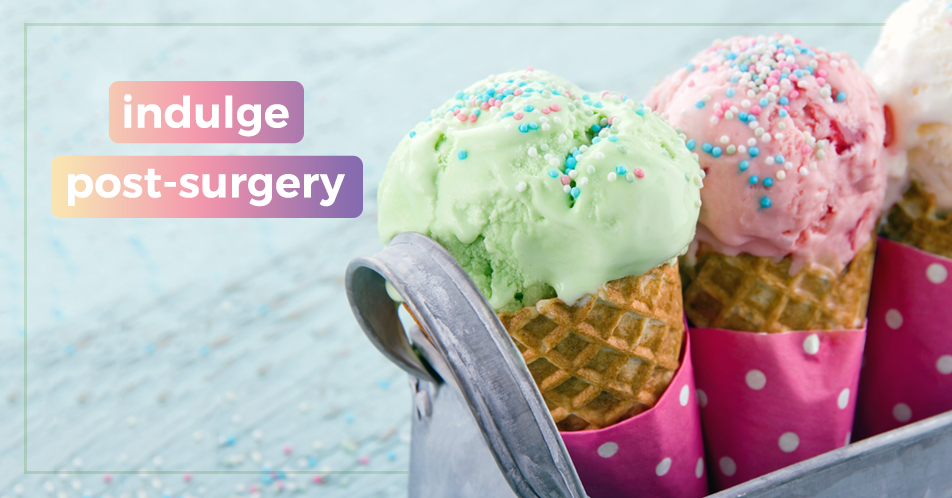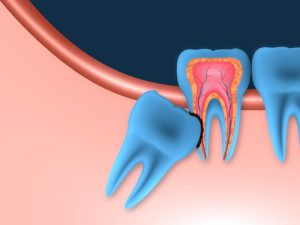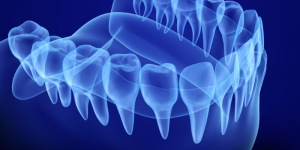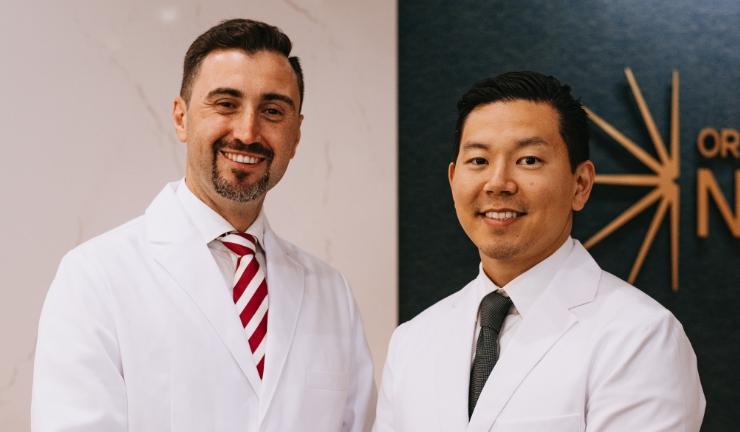 About 90% of people need to get their wisdom teeth removed. While this procedure is most common in teens and young adults when wisdom teeth first develop, it can be performed at any age if teeth are causing problems. If you are a part of that 90%, you might be wondering what the steps are post-surgery. Taking it easy and getting a lot of rest is a key step to a quick recovery. Another big step is knowing what you can and can’t eat. Many people are surprised to find that their diet can include more than just ice cream, pudding, and Jell-O. Here is a list of foods you can indulge in post-surgery.
About 90% of people need to get their wisdom teeth removed. While this procedure is most common in teens and young adults when wisdom teeth first develop, it can be performed at any age if teeth are causing problems. If you are a part of that 90%, you might be wondering what the steps are post-surgery. Taking it easy and getting a lot of rest is a key step to a quick recovery. Another big step is knowing what you can and can’t eat. Many people are surprised to find that their diet can include more than just ice cream, pudding, and Jell-O. Here is a list of foods you can indulge in post-surgery.
- Ice Cream: After having a minor surgery, it’s okay to treat yourself with a little sweet. The coolness will not only feel good, but it will also help sooth inflamed tissue. Try to avoid eating cones and flavors of ice cream with large chunks in them like chocolate chips and nuts.
- Soup: Soup is a great food to have on hand after your surgery. It provides protein and the broth is easy to eat. If you choose this brothy goodness, make sure you aren’t eating large pieces of vegetables and the temperature of the soup isn’t too hot.
- Mashed potatoes: Not only are mashed potatoes delicious, but they are easy to make and they really are the perfect post-surgery food. You can smother them with gravy, butter or sour cream. Top the meal with whatever sounds good to you, but make sure there aren’t large potato chunks you’ll have to chew. Another route you could take is mashed sweet potato. Top it with butter and cinnamon to take this savory treat to sweet!
- Steamed Vegetables: Well-steamed vegetables are soft and easy to chew while also providing essential nutrients to support healing and give you energy. You can pick up a bag of frozen vegetables at the store or steam fresh veggies you have on hand. Broccoli, cauliflower, carrots, spinach, and green beans are all good options. Add a little butter or chicken broth for extra flavor.
- Pasta: Boil your pasta a little longer than you normally would to make sure it is nice and soft. You do not want it to be firm or al dente. You can top it with butter and parmesan cheese, spaghetti sauce, or another favorite sauce. Whole wheat pasta can be a great source of whole grains and complex carbs, so it takes longer to break down and keeps you feeling fuller. You could even swap out traditional pasta with spaghetti squash or zucchini noodles to change things up.
- Smoothies (NO STRAWS): Smoothies are a great source to get all the nutrients your body will need. You can make different flavors with fruits and vegetables. Prepack your smoothie packs before you have your surgery so all you have to do is blend and enjoy. You could also add in different protein powders or vitamins to help your body. If you choose to make a smoothie, DO NOT USE A STRAW. Sucking on a straw could disrupt your healing process and create dry sockets.
Following wisdom teeth removal surgery, you will have an empty socket where the tooth root used to be. Your body naturally forms a blood clot to plug this hole and cover the exposed bone and nerves. Dry socket occurs when this blood clot is dislodged too early, and food, air, or bacteria get into the open socket. A common sign of dry socket is a throbbing pain that radiates from your jaw up toward your ear and experiencing a foul taste in your mouth.
One way to prevent dry sockets is to be cautious about what you eat and drink. This is why it is important to limit your diet to very soft foods that do not take much effort to chew, and drink straight from the glass rather than using a straw. Eating hard or crunchy foods can increase your risk of disturbing the blood clot and knocking it out of place. Dry socket is most common in the first few days after surgery when the site is just beginning to heal and is still tender.
You May Also Find Interesting: 5 Perks of Having Your Wisdom Teeth Removed
These are just a few ideas of what you can eat post-surgery. There are a ton of other options, and it really just depends on what you like and are able to tolerate. Get creative and indulge in the snacks you wouldn’t normally eat for your main course. As long as your meal does not require much chewing and is gentle on your teeth and gums, it is probably safe to try. If you start to eat something and it causes pain or discomfort, switch to a softer food.
If you have any hesitations or questions about what you can or cannot eat, or believe that you may have dry socket, call our office at (630) 961-5151. We are happy to answer any questions you may have. You can also reference our helpful post-surgical guide, which can provide more insight into what to expect as you recover from wisdom tooth removal.







